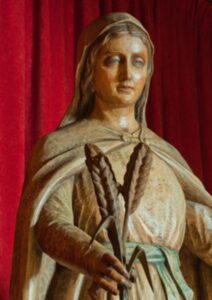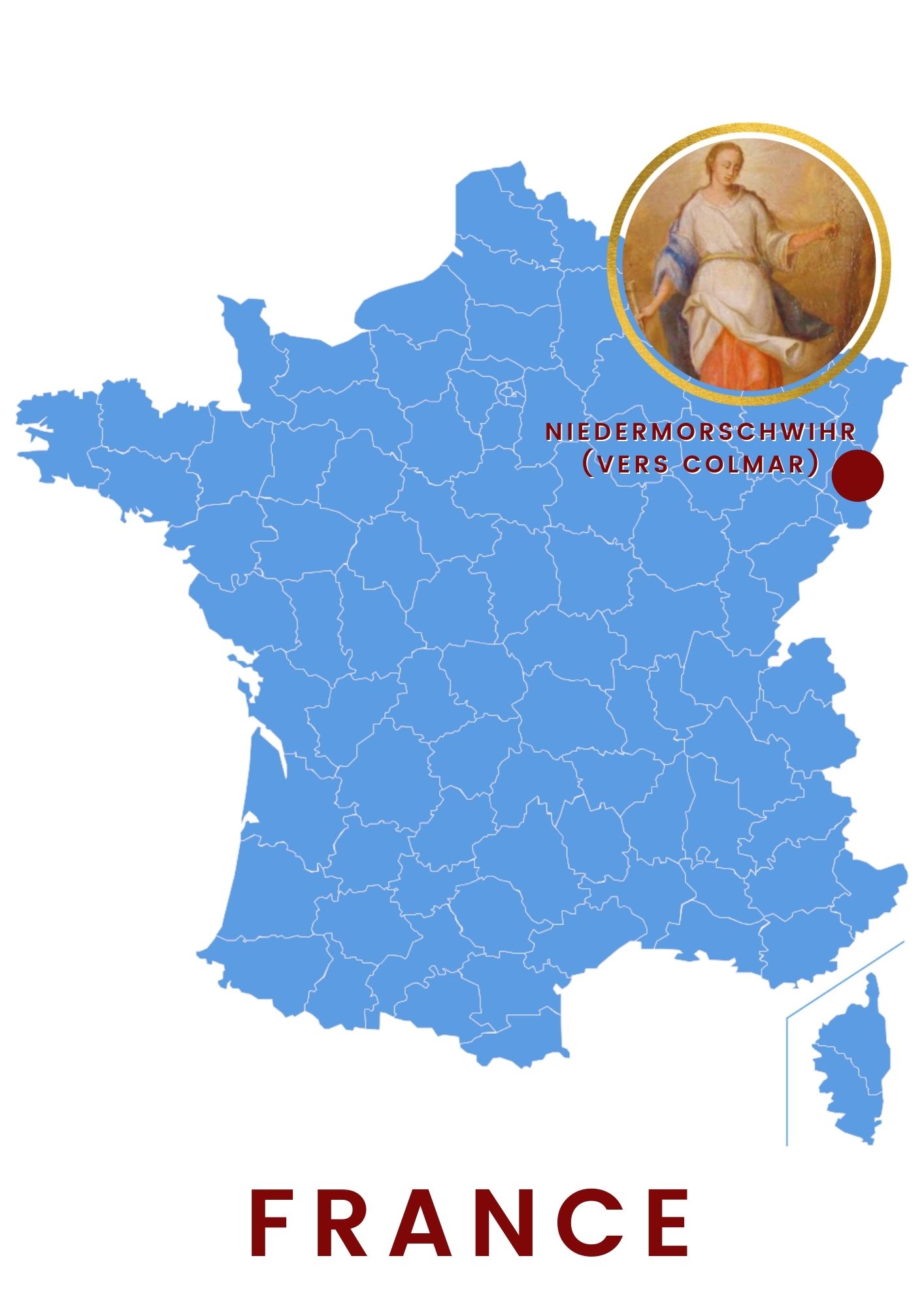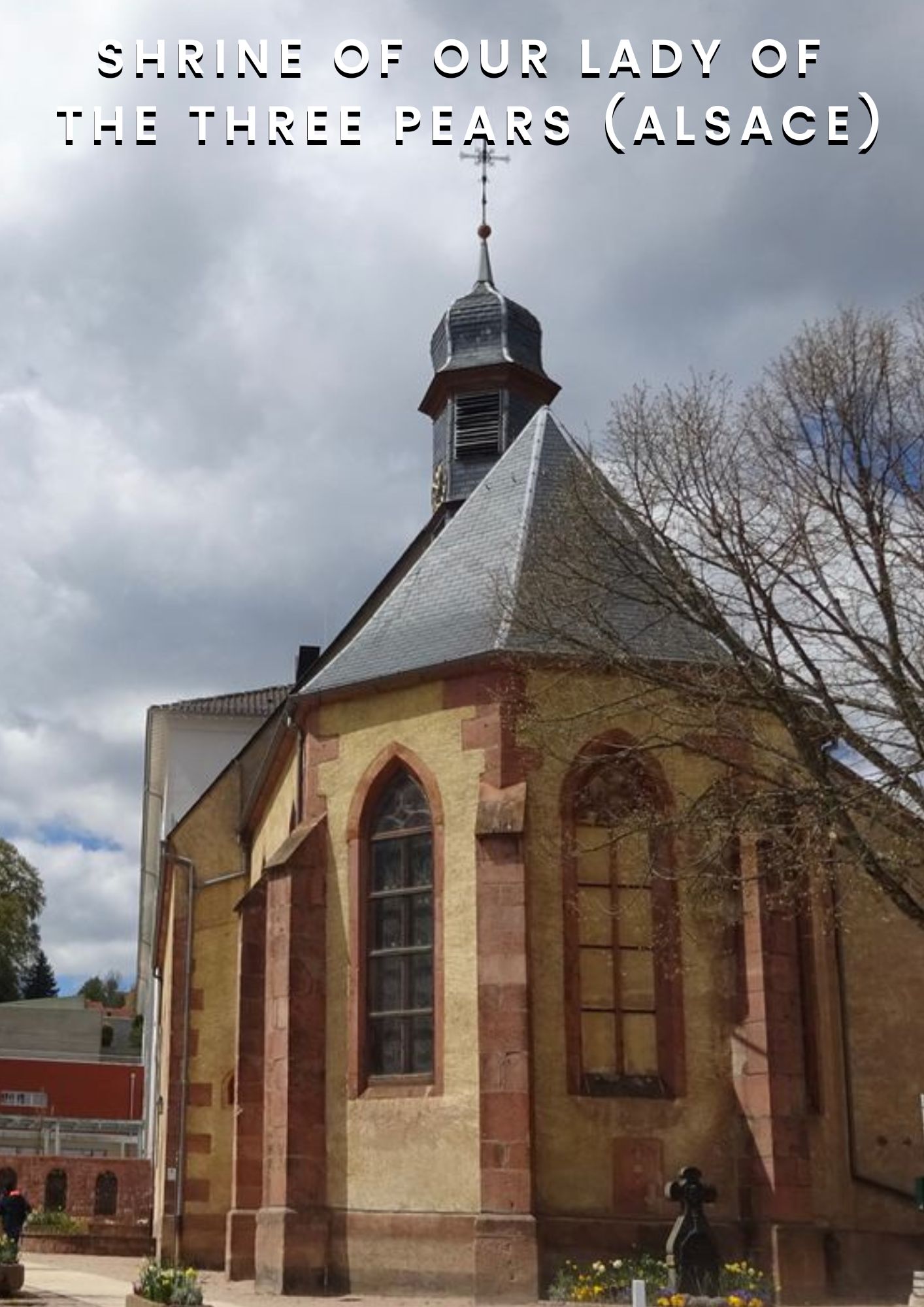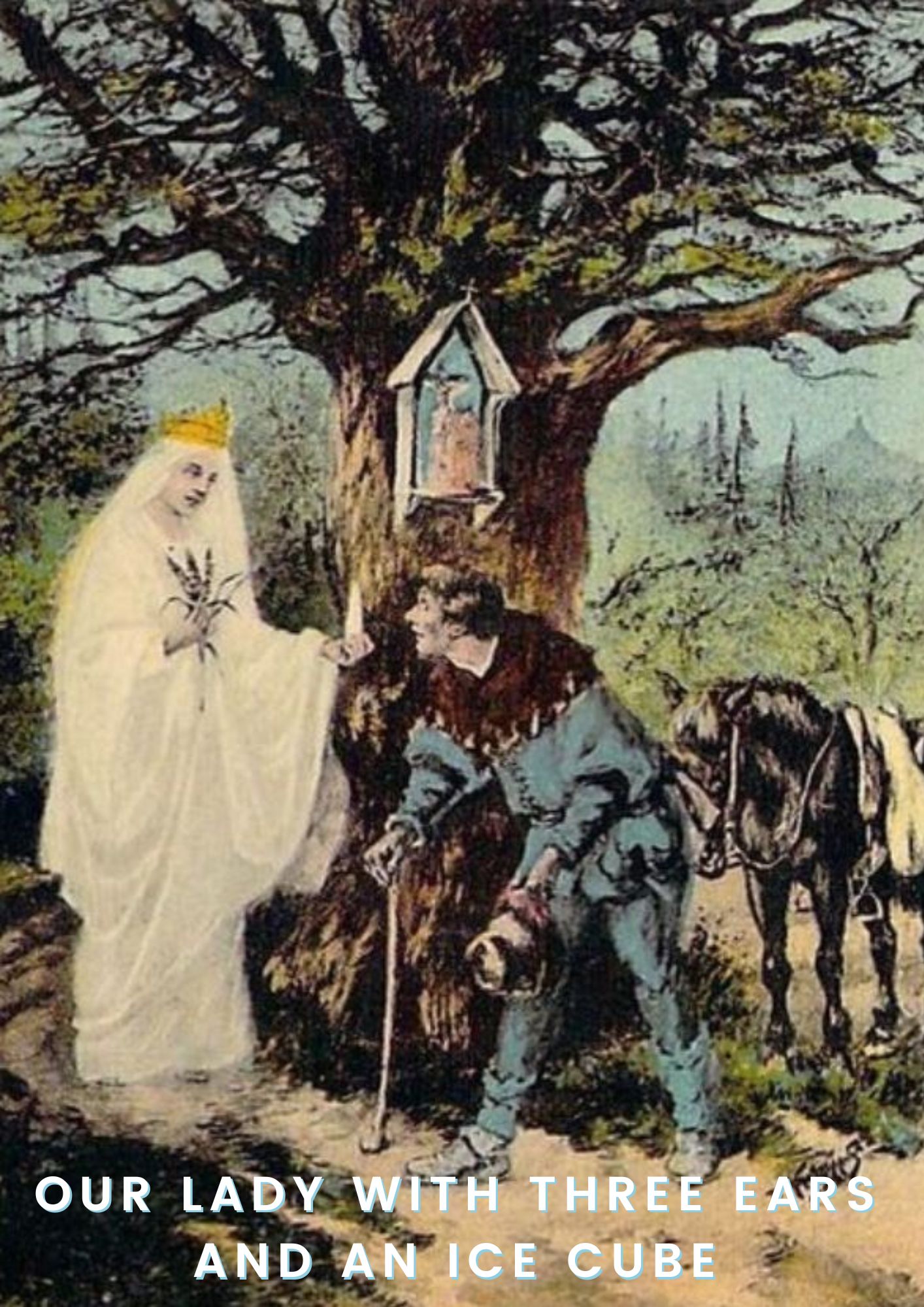
At the time, the shrine of the three ears of corn had no buildings. It was only a vast forest. On the 3rd of May 1491, at 10 o’clock in the morning, a blacksmith from the village of Orbey named Thierry Schoeré, was passing through this forest on his way to the market in Niedermorschwihr. He stopped at the foot of an oak tree where an image of Jesus crucified had been hung in memory of a harvester who had been mortally wounded there. He knelt before the image and prayed for the repose of the soul of the deceased. No sooner had he finished his prayer, than he saw in a great light the Blessed Virgin dressed in a large white robe, mantle and veil. In her left hand she held an ice cube, and in her right hand three ears of corn on a single stalk. She said to the blacksmith:
“My son, the people of the region live in great sin. God was going to send them terrible punishments… and this ice cube symbolises frosts, hail, rain, diseases and other punishments; but as the heat of my hand begins to melt the ice cube, so my fervent prayers have obtained for them that God will grant them mercy from the punishment, and as symbolised by these three ears of corn, He will grant them the prosperity of their crops, if they cease to sin and if, with a contrite heart, they do penance.
In the name of my two symbols, go to Niedermorschwihr and tell the inhabitants to repent of their sins and to undertake pilgrimages; they must stop sinning and pass on this message to other places so that all may be converted. Wherever they do not follow my recommendations, they will suffer the punishment of God without delay.”
The blacksmith dared to speak: “Alas! and how will they believe me if I bring them this news?
The Virgin answered: “These signs which you see in my hand will give credence to your words.
Then she disappeared.
Thierry went to the market in Niedermorschwihr, but he did not dare to tell anyone about the apparition. He bought the sack of wheat he had come for and was about to leave. When he tried to load the sack on his horse, he could not lift it off the ground. He called other men to help him. But it was no use. The sack of wheat became the centre of attraction in the market.
The blacksmith then regretted having failed in his mission and told of the apparition of the Virgin and her requests. He was then able to load his sack of wheat on his own without difficulty and return home. A modest wooden chapel was soon built on the site of the apparition, and in 1493 the construction of the present chapel was begun.
Alsace was one of the most important centres of the humanism that led to the Protestant Reformation. In this apparition, the Virgin Mary reminds us that God accepts prayer for the repose of the souls of the dead, Marian intercession and pilgrimages: all practices that Protestantism will banish.





